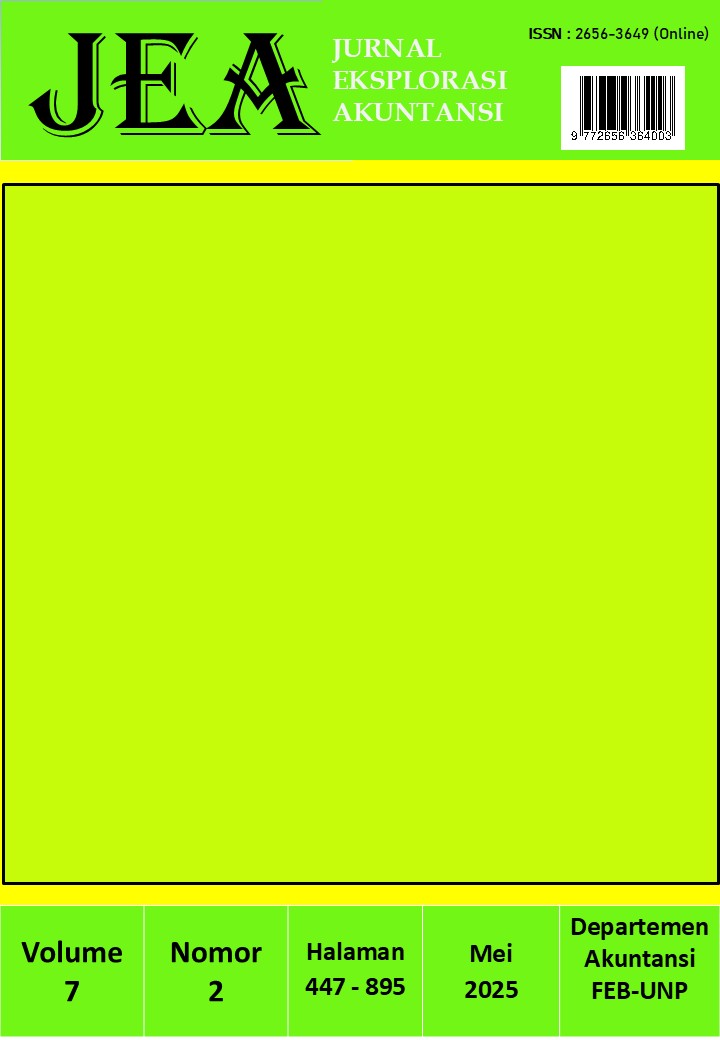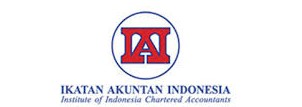Pengaruh Thin Capitalization dan Capital Intensity terhadap Tax Avoidance
Abstract
This study aims to determine the effect of Thin Capitalization and Capital Intensity on tax avoidance. This study is a type of quantitative research and uses panel data regression analysis with the help of Eviews 12. This study uses four proxies to measure tax avoidance variable, namely Lon-Run Effective Tax Rate (LRETR1, LRETR2) and Book Tax Differences (BTAX1, BTAX2. The thin capitalization variable is measured using the ratio Maximum Allowable Debt (MAD) and the capital intensity variable measured using the ratio between total fixed assets by total assets. The study population was manufacturing companies listed on the Indonesia Stock Exchange in 2018-2022. The study sample was determined by purposive sampling method, so that 58 sample of manufacturing companies were obtained. Based on panel data regression analysis, the result show that thin capitalization has an effect on tax avoidance with LRETR2, BTAX1, BTAX2 measurements, but the LRETR1 measurements has no effect. While capital intensity has no effect on tax avoidance with the four proxies, namely LRETR1, LRETR2, BTAX1, BTAX2 measurements.
References
Adegbite, T. A., & Bojuwon, M. (2019). Corporate tax avoidance practices: an empirical evidence from nigerian firms. Studia Universitatis Babes-Bolyai Oeconomica, 64(3), 39-53.
Aladwey, L. M. A. (2022). Tax avoidance practises and firm-specific characteristics: empirical evidence from the egyptian listed companies. Science Journal for Commercial Research, 44(1), 43-74.
Blouin, J., Huizinga, H., Laeven, L., & Nicodeme, G. (2014). Thin capitalization rules and multinational firm capital structure. Working paperOxford, U.K.
Falbo, T. D., & Firmansyah, A. (2018). Thin capitalization, transfer pricing aggresiveness, penghindaran pajak. Indonesian Journal of Accounting and Governance, 2(1), 1-28.
Fernandez-Rodriguez, E., & Martinez-Arias, A. (2012). Do business characteristics determine an effective tax rate?. The Chinese Economy, 45(6), 60-83
Hananto, S. A., Sumatra, N. H., & Supriyono, E. (2021). Thin capitalization determinants in manufacturing companies in indonesia. Riset Akuntansi dan Keuangan Indonesia, 6(2), 166-177.
Ismi, F., & Linda. (2016). Pengaruh thin capitalization, return on asset dan corporate governance pada perusahaan jakarta islami index. Jurnal Ilmiah Mahasiswa Ekonomi Akuntansi, 1(1), 150-165.
Istiqfarosita, M., & Fadlil, A. (2022). Political connections and thin capitalization on tax avoidance during the covid-19 pandemic. E-Jurnal Akuntansi, 32(5), 1238-1248.
Kasim, F. M., & Saad, N. (2019). Determinants of corporate tax avoidance strategies among multinational in malaysia. International Journal of Public Policy and Administration Research, 6(2), 74-81.
Kim, J. H., & Im, C. C. (2017). The study on the effect and determinants of small-and medium-sized entities conducting tax avoidance. Journal of Applied Business Research, 33(2), 375-390.
Lietz, G. (2014). Determinants and consequences of corporate tax avoidance. University of Muenster: Institute of Accounting and Taxation.
OECD. (2012). Thin capitalisation legislation: a background paper for country tax administrations, 1-41.
Pattiasina, V., Tammubua, M. H., Numberi, A., Patiran, A., & Temalagi, S. (2019). Capital intensity and tax avoidance: a case in indonesia. International Journal of Social Sciences and Humanities, 3(1), 58-71.
Putra, D. C., & Merkusiwati, L. A. (2016). Pengaruh komisaris independen, leverage, size dan capital intensity ratio pada tax avoidance. E-Jurnal Akuntansi Universitas Udayana, 17(1), 690-714.
Prastiwi, D., & Ratnasari, R. (2019). The influence of thin capitalization and the executives characteristics toward tax avoidance by manufacturers registered on ISE in 2011-2015. Jurnal Akuntansi, 10(2), 119-134.
Richardson, G., & Lanis, R. (2007). Determinants of the variability in corporate effective tax rates and tax reform: evidence from australia. Journal of Accounting and Public Policy, 26(6), 689-704.
Salwah, S., & Herianti, E. (2019). Pengaruh aktivitas thin capitalization terhadap penghindaran pajak. Jurnal Riset Bisnis, 3(1), 30-36.
Taylor, G., & Richardson, G. (2012). International corporate tax avoidance practices: evidence from australian firms. International Journal of Accounting, 47(4), 469-496.
Wang, F., Xu, S., & Sun, J. (2019). Corporate tax avoidance: a literature review and research agenda. Journal of Economic Surveys, 1-19.







.png)
.png)
